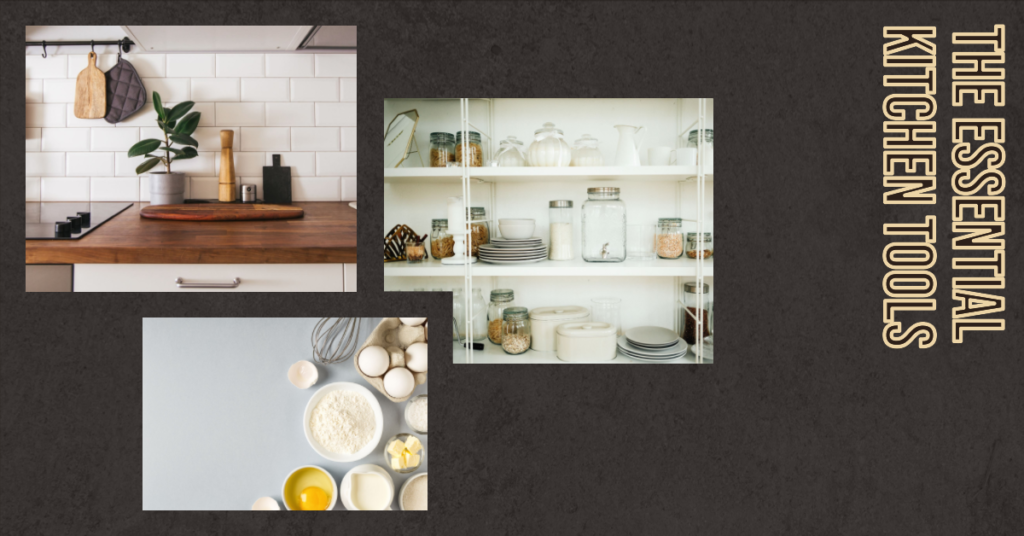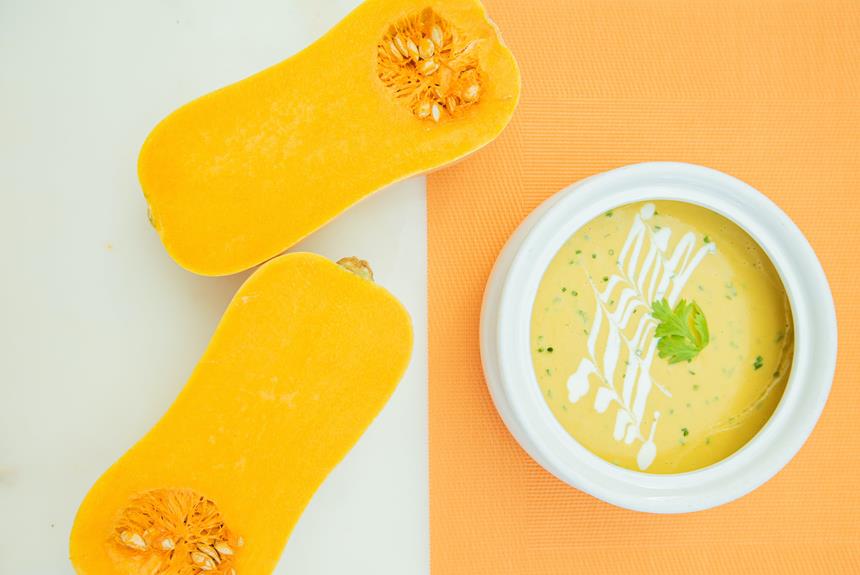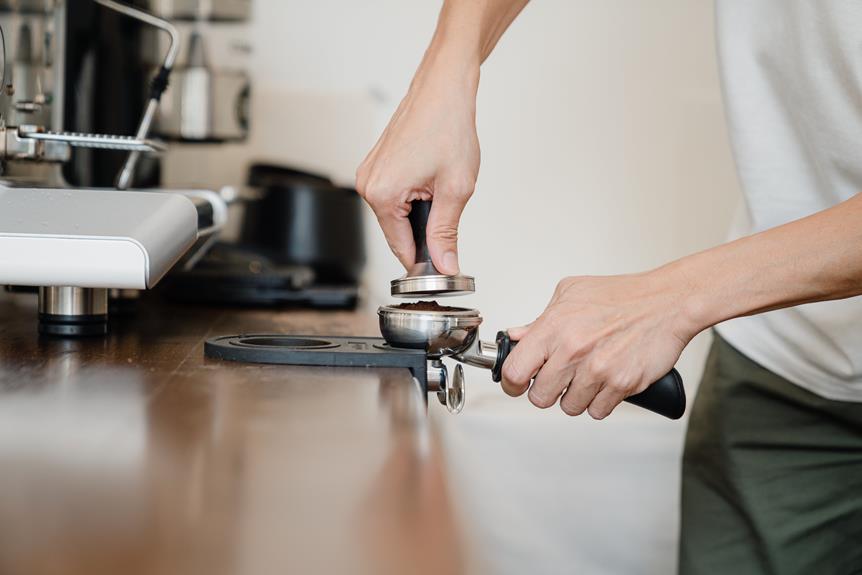You’re looking for eco-friendly cookware that aligns with your health-conscious values. Ceramic and stainless steel options are great choices, as they’re non-toxic and non-reactive. Cast iron cookware is another excellent option, increasing iron intake and promoting healthy cooking techniques. If you prefer non-stick, look for eco-friendly coatings made from plant-based materials. Bamboo and wood cookware options are natural, sustainable, and aesthetically pleasing. You may also consider repurposed or recycled cookware to minimize environmental impact. With so many options, you’re just a step away from cooking up a healthier, more sustainable kitchen – and there’s more to explore. When selecting essential cookware for beginners, consider multipurpose items such as a good quality chef’s knife, a durable cutting board, and a versatile set of pots and pans. These foundational pieces will set you up for success in the kitchen and can also be found in eco-friendly materials such as bamboo, stainless steel, and ceramic. By choosing sustainable and non-toxic cookware, you can feel confident that you are investing in both your health and the health of the planet.
Non-Toxic Ceramic Cookware Options
Switching to non-toxic ceramic cookware options is a great way to guarantee the food you cook and the planet you inhabit remain healthy and thriving.
You’ll be delighted to know that ceramic coatings are free from toxic chemicals like PFOA and PTFE, which are commonly found in traditional non-stick pans.
These harmful substances can leach into your food, posing health risks, especially when cooking at high temperatures.
Ceramic cookware, on the other hand, provides a safe and healthy environment for your meals.
When it comes to cooking techniques, ceramic cookware is incredibly versatile.
You can sauté, sear, or simmer your favorite dishes with ease.
The ceramic coatings also promote even heat distribution, allowing for consistent results.
Plus, they’re non-reactive, which means your food won’t absorb any unwanted flavors or odors.
Whether you’re a seasoned chef or a beginner in the kitchen, ceramic cookware is an excellent choice.
Cast Iron for a Healthy Kitchen
You can also opt for cast iron cookware, a timeless choice that’s not only durable but also packed with health benefits.
One of the most significant iron benefits is that it increases your iron intake, especially for individuals with iron deficiency. When you cook with cast iron, a small amount of iron leaches into your food, providing a natural iron supplement.
Additionally, cast iron cookware promotes healthy cooking techniques, such as slow cooking and braising, which help retain nutrients in your food. These techniques also make your meals more tender and flavorful.
To get the most out of your cast iron cookware, make sure to season it regularly to prevent rust and maintain its non-stick properties.
With proper care, your cast iron cookware can last for decades, and its health benefits will only continue to accumulate. By switching to cast iron, you’ll not only upgrade your kitchen but also improve your overall well-being.
Green Non-Stick Cooking Solutions
Fortunately, eco-conscious home cooks can rejoice in the fact that there are now several green non-stick cooking solutions available on the market that are free from toxic chemicals and environmentally harmful materials.
You no longer have to sacrifice performance for sustainability when it comes to non-stick cookware. Many brands now offer eco-friendly non-stick coatings that are made from plant-based materials, such as coconut oil or bamboo.
These eco coatings aren’t only better for the environment, but they’re also safer for your health. They’re PFOA-free, PTFE-free, and won’t leach chemicals into your food. Plus, they’re often more durable and resistant to scratches than traditional non-stick coatings.
When shopping for green non-stick cookware, look for certifications like Eco-Institut or Oeko-Tex, which guarantee that the products meet high environmental and health standards.
Sustainable Copper Cookware Alternatives
Copper cookware’s impressive heat conductivity has long made it a popular choice among chefs, but its high environmental cost has led many eco-conscious cooks to seek sustainable alternatives.
You’re likely aware of copper’s benefits, such as its exceptional heat distribution and durability. However, the extraction and processing of copper can have devastating environmental consequences.
Fortunately, you can still reap the benefits of copper cookware while minimizing its ecological impact. Look for sustainable copper cookware alternatives that prioritize eco-friendliness without sacrificing performance.
Some brands offer copper-infused cookware made from recycled materials, reducing waste and the demand for newly mined copper.
When shopping for sustainable copper cookware, be sure to check for eco certifications like ISO 14001 or Oeko-Tex. These certifications guarantee that the manufacturer adheres to strict environmental and social responsibility standards.
Healthier Silicone Cooking Essentials
When you’re cooking with silicone, you’re already taking a step in the right direction – but did you know that healthier silicone cooking essentials can offer even more benefits?
You’ll love the non-stick surface that makes food release easy and cleaning a breeze.
Plus, you’ll have peace of mind knowing you’re using toxic chemical-free options that prioritize your well-being.
Non-Stick Surface Benefits
Non-stick surfaces, often made with healthier silicone cooking essentials, prevent food from bonding to the cookware, making meal prep and cleanup a whole lot easier.
This is especially true when cooking delicate foods like eggs or pancakes, which can be notoriously sticky. With a non-stick surface, you can simply wipe away any residue, making cleanup a breeze.
Additionally, non-stick surfaces promote even heat distribution, ensuring that your dishes are cooked consistently throughout. This is particularly important when cooking methods like sautéing or searing, where hotspots can lead to burnt or undercooked areas.
The benefits of non-stick surfaces extend to cooking techniques as well. You’ll find it easier to cook with less oil or butter, as the non-stick surface prevents food from sticking and forming unhealthy bonds.
This not only makes your meals healthier but also reduces waste and saves you money in the long run. Overall, the ease of cooking and cleaning with non-stick surfaces makes them an ideal choice for health-conscious cooks.
Toxic Chemical Free Options
By choosing cookware with healthier silicone cooking essentials, you’re not only reaping the benefits of non-stick surfaces but also ensuring that your cooking experience is free from toxic chemicals that can leach into your food.
When it comes to cooking, chemical reactions between cookware and food can be a major concern. That’s why you must opt for safe materials that won’t contaminate your meals.
Silicone cooking essentials are a great alternative to traditional non-stick coatings, which often contain harmful chemicals like PFOA and PTFE.
These toxic chemicals can break down when heated, releasing harmful fumes and residues that can find their way into your food.
On the other hand, silicone cooking essentials are made from food-grade materials that are resistant to high temperatures and chemical reactions.
They’re also easy to clean, durable, and non-stick, making them an ideal choice for health-conscious cooks like you.
Bamboo and Wood Cookware Options
Among eco-friendly cookware options, bamboo and wood stand out for their natural, non-toxic, and sustainable properties.
When considering these options, you’ll find that bamboo cookware excels in durability. Bamboo is incredibly resistant to scratches and cracks, making it an excellent choice for daily use. Additionally, bamboo cookware is often treated with natural oils, which enhances its non-stick properties. This means you can cook with minimal oil, reducing your overall fat intake.
On the other hand, wooden cookware is renowned for its aesthetics. Wooden utensils and cutting boards add a touch of warmth and coziness to your kitchen. They’re also easy to clean and maintain, as they’re less prone to harboring bacteria.
Wooden cookware is often made from sustainably sourced hardwoods, ensuring that your cooking habits don’t contribute to deforestation. With proper care, wooden cookware can last for years, making it a worthwhile investment for health-conscious cooks.
Recycled and Repurposed Cookware
As you explore the world of eco-friendly cookware, you’ll discover that recycled and repurposed materials can breathe new life into your kitchen.
You’ll find that old materials can be transformed into functional, eco-conscious essentials that reduce waste and minimize environmental impact.
Old Materials New Life
You can breathe new life into your kitchen with recycled and repurposed cookware, a creative way to reduce waste and minimize environmental harm.
This eco-friendly approach not only helps the planet but also adds a touch of uniqueness to your cooking space.
Repurposed fabrics, such as old cotton or linen, can be transformed into functional items like oven mitts, aprons, or even pot holders.
These one-of-a-kind pieces will make a statement in your kitchen while reducing textile waste.
Reclaimed metals, like copper or stainless steel, can be repurposed into cookware, utensils, or decorative accents.
This process reduces the demand for new, resource-intensive materials and gives old materials a second chance.
You can find repurposed cookware at local thrift stores, online marketplaces, or even create your own pieces with a little creativity and DIY spirit.
By choosing recycled and repurposed cookware, you’ll be doing your part to reduce waste and create a more sustainable kitchen.
Plus, you’ll have a conversation-starting kitchen that’s both eco-friendly and Instagram-worthy.
Upcycled Kitchen Essentials
Beyond the unique decorative accents, repurposed materials can also be transformed into functional upcycled kitchen essentials that’ll make a real difference in your cooking routine.
You can breathe new life into old items, giving them a creative reuse that’s both eco-friendly and cost-effective. For instance, you can turn old mason jars into spice containers or use a vintage colander as a planter for fresh herbs.
This approach not only reduces waste but also adds a touch of personality to your kitchen.
When you undertake a kitchen revamp, consider upcycling old cookware instead of replacing it.
You can refinish or repaint old pots and pans to give them a fresh look. Even broken ceramics can be repurposed as plant markers or coasters.
By adopting this creative approach, you’ll reduce your environmental footprint while creating a unique kitchen space that reflects your personal style.
Conclusion
You’ve got the scoop on eco-friendly cookware options that prioritize your health and the planet’s.
From non-toxic ceramic to sustainable copper, and from bamboo to recycled cookware, you’ve explored the gamut of healthy kitchen essentials.
Now, it’s time to make an informed choice that aligns with your values.
Ditch the toxic chemicals and invest in cookware that nourishes both you and the environment.
Your health and the planet will thank you!





